
I stumbled onto something that actually worked for me after years of trying everything else – and it’s not about eating less or obsessing over calories. After failing at every plant-based diet that left me hangry and raiding the pantry at midnight, I discovered something almost embarrassingly simple: when you eat matters just as much as what you eat. This guide breaks down the timing tricks that helped me lose weight by working with my body instead of constantly fighting it.
Here’s the thing – according to recent research, only about 1% of people follow a strictly vegan diet in the U.S., but the potential for weight loss success through smart plant-based eating is huge when you stop making it so complicated.
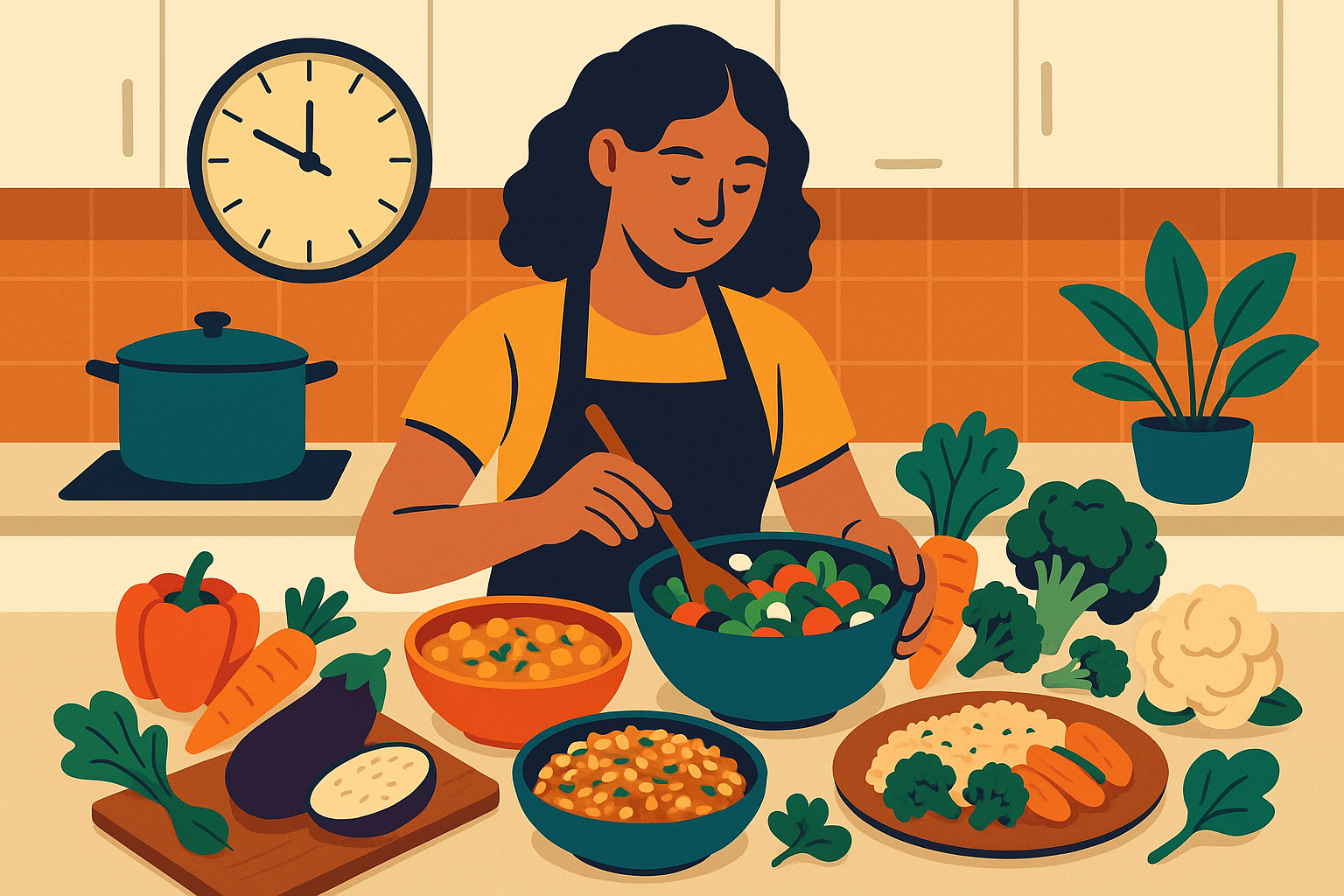
Table of Contents
- Eating at the Right Times (Finally!)
- Making Your Gut Bacteria Work For You
- Simple Ways to Get More from Your Food
- The Week-Long Plan That Actually Works
TL;DR
- Your body has natural rhythms that determine when it burns fat best – work with them, not against them
- Feed the good bacteria in your gut with the right foods at the right times, and they’ll become your weight loss allies
- Simple food tricks can help you absorb way more nutrients, so you can eat less but feel satisfied
- A realistic 7-day plan that combines everything without making you want to give up by day 3
- Match your eating schedule to whether you’re a morning person or night owl – it makes a huge difference
Eating at the Right Times (Finally!)
Most vegetarian weight loss advice focuses entirely on what to eat, but I learned the hard way that timing is everything. Your body has an internal clock that controls when you burn fat efficiently, when you actually absorb nutrients, and when you’re most likely to store everything as fat. Once I started eating with these natural rhythms instead of fighting them, weight loss stopped feeling like a constant battle.
This isn’t about restriction – it’s about finally working with your body instead of against it. I spent years wondering why I’d feel amazing after breakfast some days and completely drained others, eating the exact same foods. Turns out, it wasn’t the food – it was the timing.
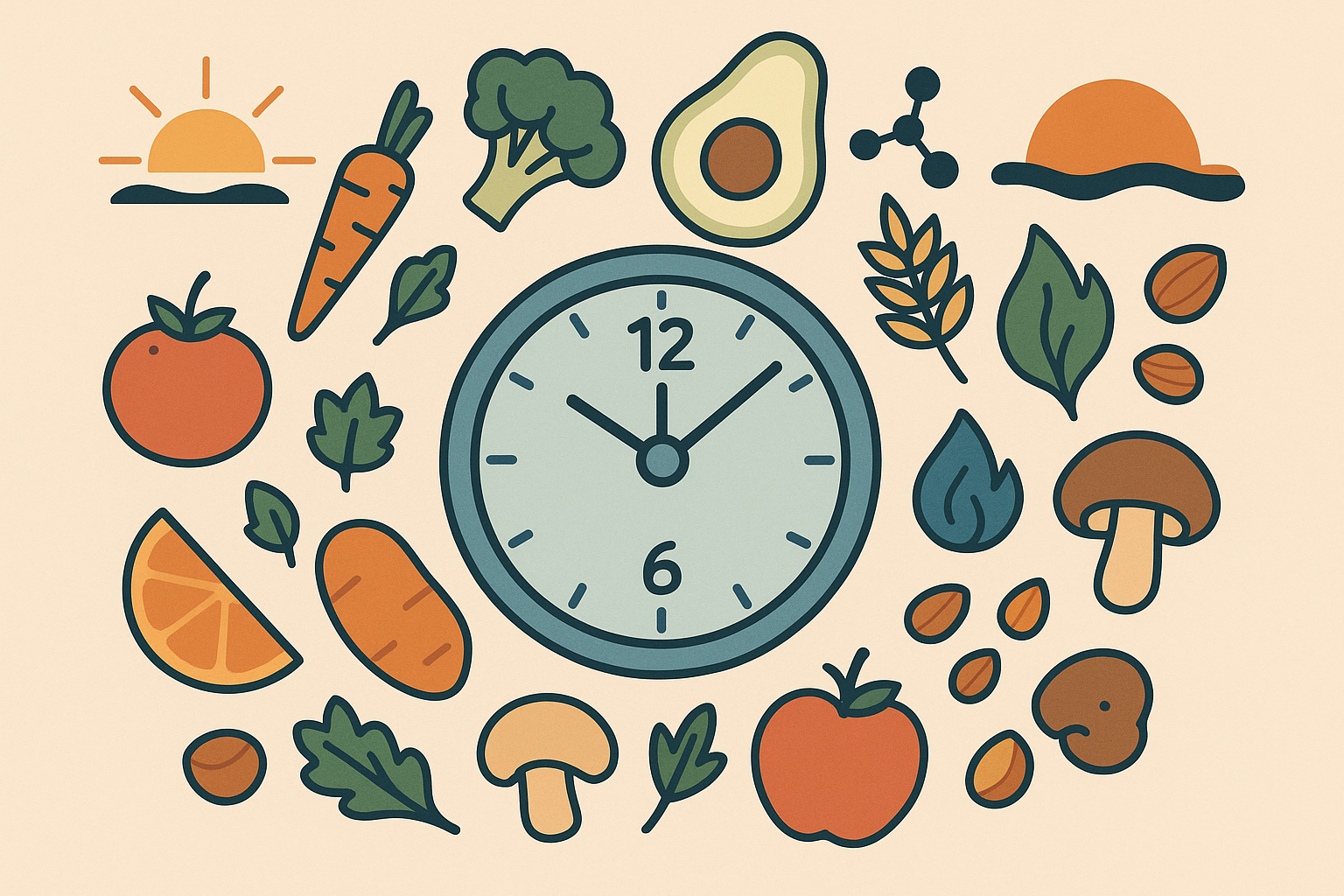
Figuring Out Your Natural Schedule
Here’s something most people don’t realize: whether you’re naturally a morning person or night owl isn’t just a preference – it’s actually genetic. Your body type determines the best windows for eating different foods from plant sources. Once I stopped fighting my natural tendencies and started eating according to my biological blueprint, weight loss became so much easier because I wasn’t constantly swimming upstream.
You know how some celebrity approaches get attention? “Bruce Springsteen’s approach to eating just one meal a day has gained attention,” though honestly, that sounds pretty extreme and probably isn’t sustainable for most of us trying to live normal lives.
If you want to dig deeper into timing strategies, there’s good info on how women can effectively implement intermittent fasting that covers the gender-specific stuff that actually matters.
| Your Type | Best Breakfast Time | When to Eat Carbs | Stop Eating By | Good Plant Proteins |
|---|---|---|---|---|
| Morning Person | 6:00-7:00 AM | 11:00 AM-1:00 PM | 6:00 PM | Hemp seeds, spirulina |
| In Between | 7:00-8:00 AM | 12:00-2:00 PM | 7:00 PM | Quinoa, lentils |
| Night Owl | 8:00-9:00 AM | 1:00-3:00 PM | 8:00 PM | Tempeh, chickpeas |
Don’t stress if you eat breakfast at 7:15 instead of 7:00 – your body isn’t a Swiss watch. I used to set 47 alarms on my phone. Now I just eat when I’m actually hungry within my window.
Starting Your Day Right (Even If You Hate Mornings)
Here’s something that sounds weird but actually works: I start each morning with 16 ounces of lemon water with a pinch of salt, then wait 30 minutes before eating. Yes, I’m asking you to drink salt water first thing in the morning. I know how it sounds.
But this simple ritual wakes up your digestive system and gets it ready to actually absorb nutrients instead of just processing them. Following this with something protein-rich like hemp seeds, spirulina, or plant protein powder sets you up to burn calories efficiently all day instead of crashing by 10 AM.
Sarah, who works in marketing, was skeptical about the salt water thing (honestly, we all were). But she tried drinking it at 6 AM, then having a spirulina smoothie with hemp seeds at 6:30 AM. Within three weeks, she had steady energy until lunch and lost 4 pounds without changing anything else. Sometimes the weird stuff works.
The Magic Window for Carbs
Between 12-3 PM, your body is basically begging for carbohydrates – this is when your insulin sensitivity peaks. I schedule my highest-carb meals during this time, loading up on quinoa, sweet potatoes, and legumes without any guilt.
Your muscles are literally asking for glucose during these hours, so they’ll use it immediately instead of storing it as fat. It’s like having a free pass to satisfy those carb cravings without the consequences. You know that 3 PM energy crash when you’d sell your soul for a candy bar? This timing helps prevent that entirely.
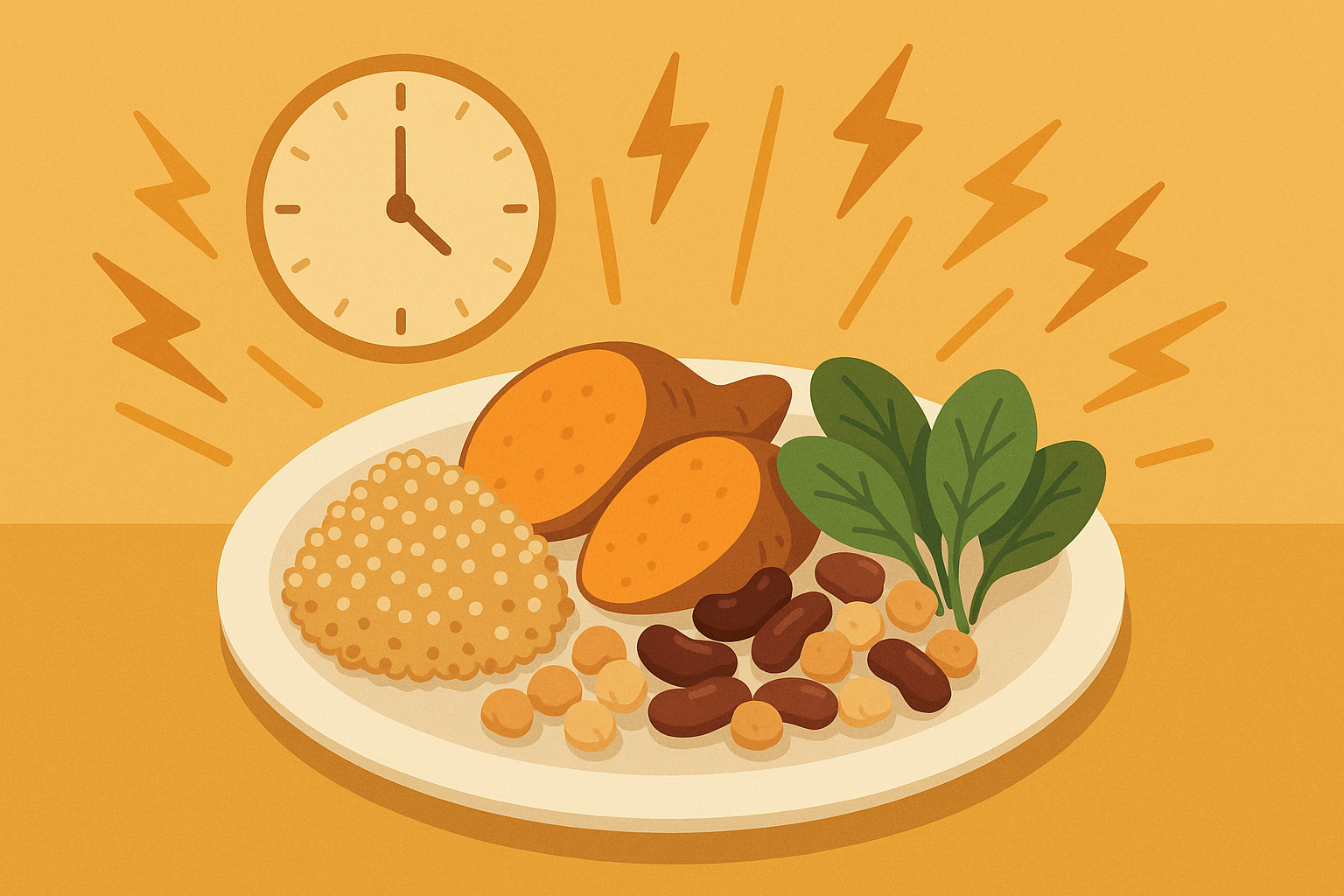
Making Intermittent Fasting Actually Work
Strategic eating windows make everything good about vegetarian eating better while creating conditions where your body prefers burning fat over storing it. The key isn’t just restricting when you eat – it’s making sure that when you do eat, you’re getting complete proteins and all the nutrients your body needs.
This preserves muscle while you lose fat, which is something regular calorie restriction usually screws up. I’ve watched too many people lose weight only to gain it all back because they lost muscle along with fat, making their metabolism slower than when they started.
Research shows some promising results here: participants in the vegan group lost more body weight (6.5 kg) compared to the ADA group (3.1 kg) in a 22-week study, which shows that strategic plant-based eating can be really effective.
When you’re doing any kind of fasting, it helps to know how to optimize digestion and reduce bloating during your eating windows so you actually feel good.
The 16:8 Window (Less Scary Than It Sounds)
I eat all my food within an 8-hour window (usually 11 AM to 7 PM) while making sure each meal has complete amino acids. The magic happens through simple combinations like rice and beans, or quinoa and nuts – stuff you probably already eat.
These combinations make sure you’re not just fasting effectively, but also building and keeping lean muscle during your eating windows. Your body learns to get really good at using stored fat for energy during the 16-hour break from eating.
The first week can feel challenging, but I promise your hunger patterns will shift. You’ll start naturally feeling hungry during your eating window and satisfied during fasting hours. Some days I nail the timing, other days I eat dinner at 9 PM because life happened. Both are okay.
Longer Fasts (When You’re Ready)
Before trying 24-48 hour fasts, I make sure to get extra nutrients that vegetarians often miss – B12, iron, and essential fatty acids from things like nutritional yeast, pumpkin seeds, and algae-based supplements.
Think of it as nutritional insurance that lets you fast safely while staying healthy. Don’t jump into extended fasting without proper preparation – I learned that the hard way.
Before Longer Fasts, Make Sure You Have:
- B12 supplement (500-1000 mcg)
- Iron-rich foods (spinach, pumpkin seeds, lentils)
- Omega-3 from algae oil (1000 mg)
- Magnesium from dark leafy greens
- Complete amino acids from quinoa or hemp
- Electrolytes (sea salt, potassium from bananas)
Breaking Fasts Without Feeling Terrible
Coming out of a fast correctly is just as important as the fast itself. I always start with easily digestible plant proteins like hemp hearts or pea protein smoothies, then gradually add fiber-rich foods over 2-3 hours.
Your digestive system basically goes into hibernation during extended fasts. Shocking it back to life with a huge meal is asking for trouble. Trust me, I’ve made this mistake and it’s not fun.
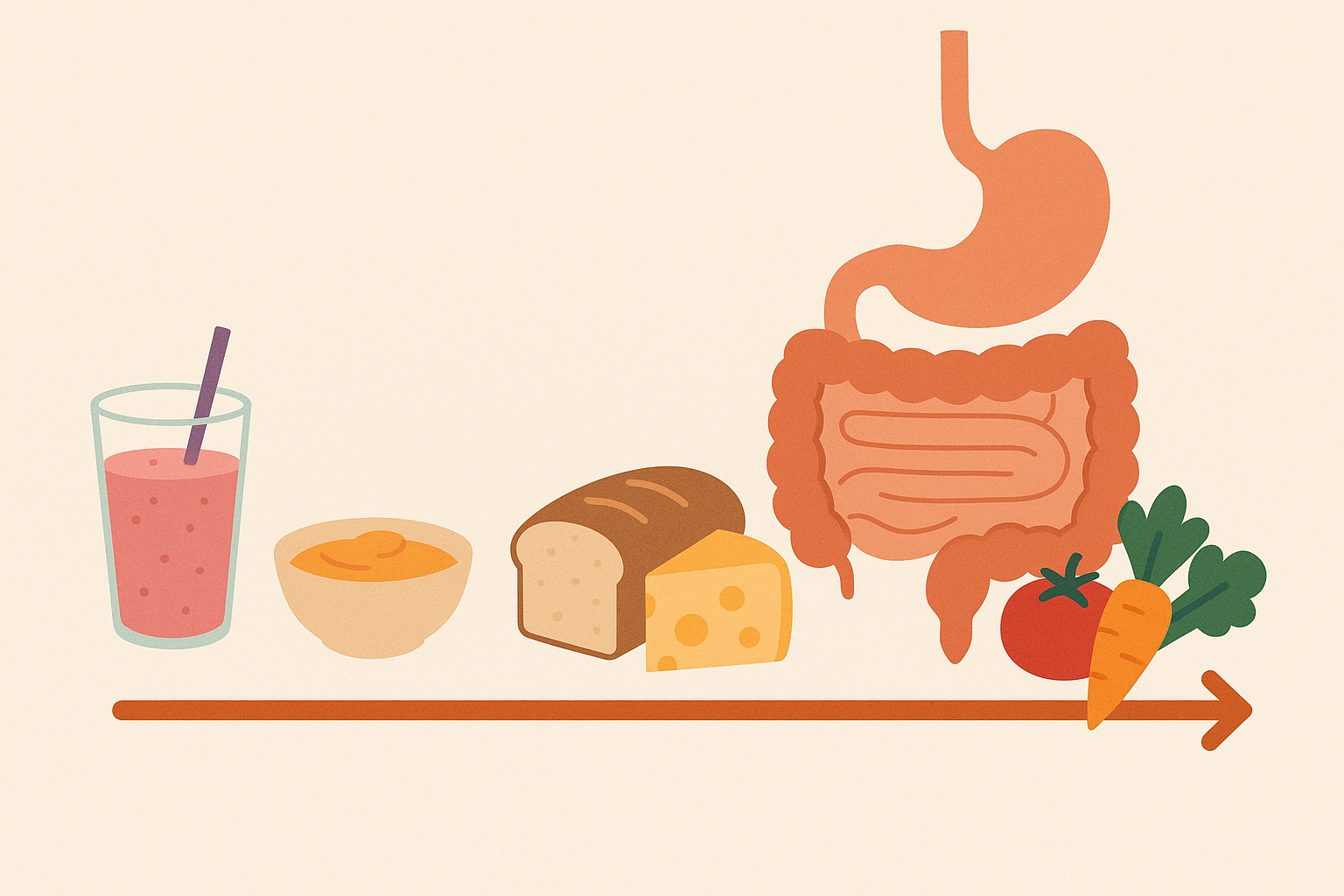
Eating with the Seasons (Like Your Grandparents Did)
Your body’s needs change throughout the year, and I’ve learned to change my eating with the seasons. This isn’t just about what’s fresh and cheap – it’s about matching your food choices to what your body actually needs.
Our ancestors didn’t have tropical fruits in winter or root vegetables in summer, and our metabolisms still expect these natural changes. Working with these patterns instead of against them makes everything easier.
Spring Cleaning for Your Liver
During spring, I focus on bitter greens like dandelion, arugula, and watercress to help my liver process and eliminate stored toxins that can interfere with weight loss. Your liver is basically your body’s main fat-burning organ, so keeping it happy is crucial.
These foods might taste weird at first (bitter greens aren’t exactly pizza), but they contain compounds that help your liver do its job better. Maria, a teacher I know, switched to dandelion green salads each March and consistently loses 3-5 pounds during spring months while feeling more energetic. She swears by her seasonal approach.
Making Your Gut Bacteria Work For You
The bacteria living in your intestines directly influence whether you succeed or struggle with weight management on a vegetarian diet. By feeding the good bacteria while starving the troublemakers, you can literally reshape your gut to become a fat-burning ally instead of working against you.
This isn’t about taking random probiotics from the health food store – it’s about creating an internal ecosystem that naturally supports your weight loss goals. The bacteria in your gut actually send signals to your brain about hunger, cravings, and energy levels. Pretty wild, right?
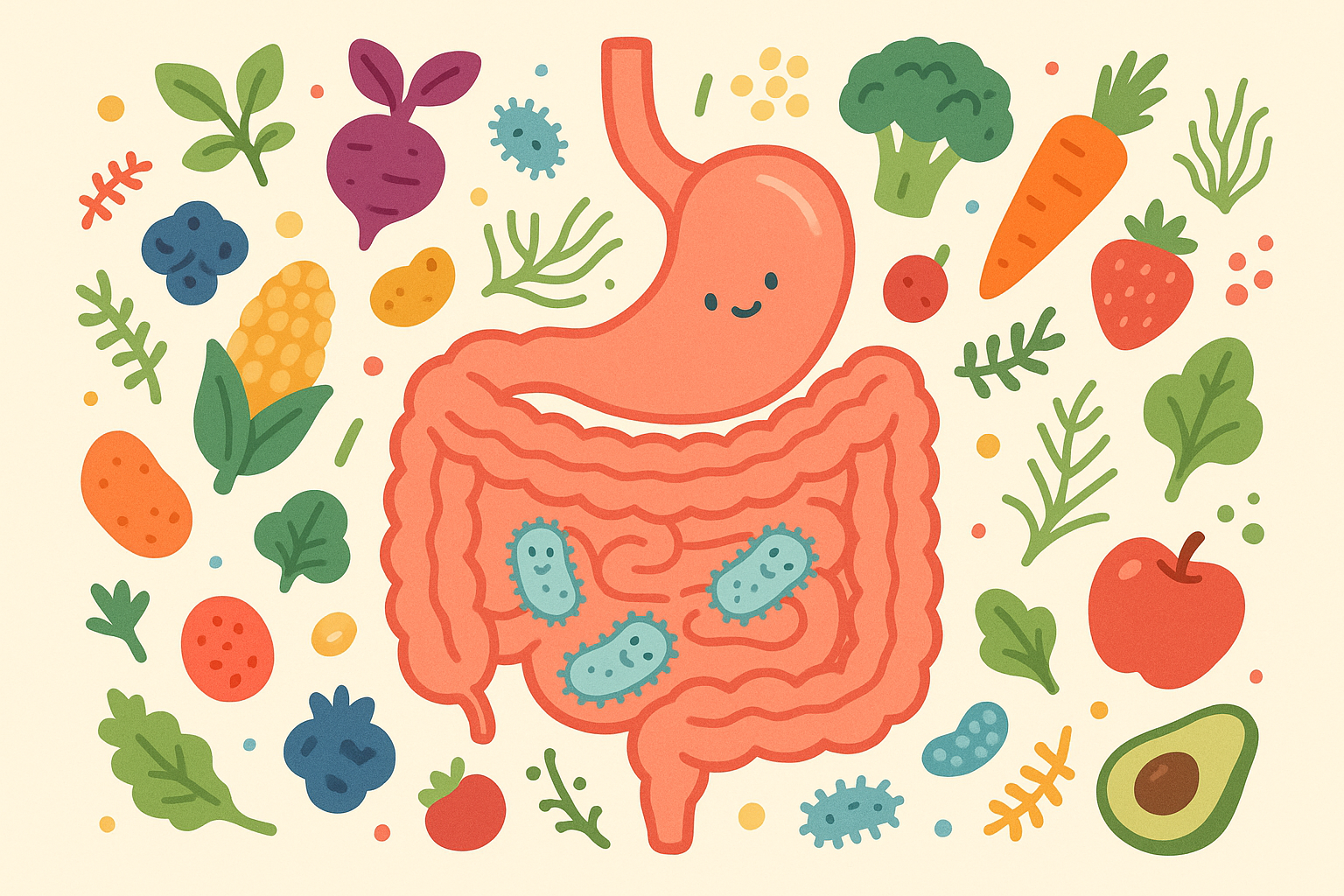
Understanding how drinking vinegars can enhance gut health is a good starting point for creating the right environment for beneficial bacteria.
Feeding the Right Bacteria at the Right Times
The order and timing of eating different fiber-rich foods creates chain reactions in your gut that most people never think about. I’ve found that specific sequences promote the growth of bacteria associated with lean body composition and better metabolism.
It’s not enough to just eat fiber – you need to feed the right bacteria at the right times to create lasting changes. Different bacterial strains prefer different types of fiber, and they’re most active at different times of day. It’s like having tiny personal trainers living in your gut.
Morning Fuel for Good Bacteria
I start each day with cooled, reheated potatoes or green banana flour to specifically feed beneficial bacteria that strengthen your intestinal lining and improve how your body handles sugar throughout the day.
The cooling and reheating process creates resistant starch that passes through your small intestine undigested, arriving in your colon as premium fuel for these weight-loss-promoting bacteria. Most people think reheated potatoes sound gross, but I’ve learned to embrace them cold in salads or quickly sautéed with herbs. The benefits are worth the minor weirdness.
Evening Appetite Control
I end meals with dark berries, pomegranate seeds, or green tea to deliver compounds that feed bacteria strains which produce natural appetite suppressants. These work as cravings-busters made by your own gut bacteria.
The timing matters because these bacteria are most active during evening hours. I’ve noticed that my late-night kitchen raids virtually disappeared once I started this practice consistently. We’ve all been there – standing in front of the fridge at 9 PM wondering why we’re still not satisfied.
Rotating Fermented Foods (Without Going Crazy)
I rotate different fermented foods throughout the week to prevent bacterial boredom while introducing diverse beneficial strains. Having many different good bacteria is more important than having tons of just a few types.
Your gut ecosystem thrives on variety, like a natural forest. I follow a loose 7-day cycle, but don’t stress if you miss a day or eat kimchi twice in a row. The fermentation police aren’t coming for you.
Weekly Rotation (Adjust to Your Taste)
I keep it simple: Monday (sauerkraut), Tuesday (kimchi), Wednesday (miso), Thursday (tempeh), Friday (water kefir), Saturday (kombucha), Sunday (fermented vegetables). Each introduces different bacterial strains and provides unique benefits.
Look, I know sauerkraut isn’t sexy, but hear me out. Start with whatever doesn’t make you gag. I began with kombucha because it felt like drinking soda. Now I actually crave kimchi (I know, I’m surprised too).
| Day | Fermented Food | What It Does | How Much | Notes |
|---|---|---|---|---|
| Monday | Sauerkraut | Better digestion, less inflammation | 2-3 tablespoons | Start small if you’re new to this |
| Tuesday | Kimchi | Immune support, vitamin production | 1-2 tablespoons | Spicy but worth it |
| Wednesday | Miso | Protein building, satisfaction | 1 tablespoon | Great in soup or dressing |
| Thursday | Tempeh | Complete amino acids, B12 | 3-4 oz serving | Actually tastes good when cooked right |
| Friday | Water Kefir | Bacterial diversity, mineral absorption | 4-6 oz | Less tangy than kombucha |
| Saturday | Kombucha | Detox support, energy | 4-6 oz | Watch the sugar content |
| Sunday | Fermented Vegetables | Fiber processing, energy production | 2-3 tablespoons | Mix it up with different veggies |
Timing Your Fermented Foods
Eating fermented foods 15-20 minutes before meals allows the good bacteria to set up shop in your stomach and prepare your system to actually absorb nutrients instead of just processing them. This enhances absorption from plant-based foods while reducing overall calorie absorption.
You get more nutrition from fewer calories, and the probiotics help break down compounds in plant foods that can interfere with mineral absorption. I set a timer on my phone to remind myself – otherwise I forget and dive straight into the main meal.
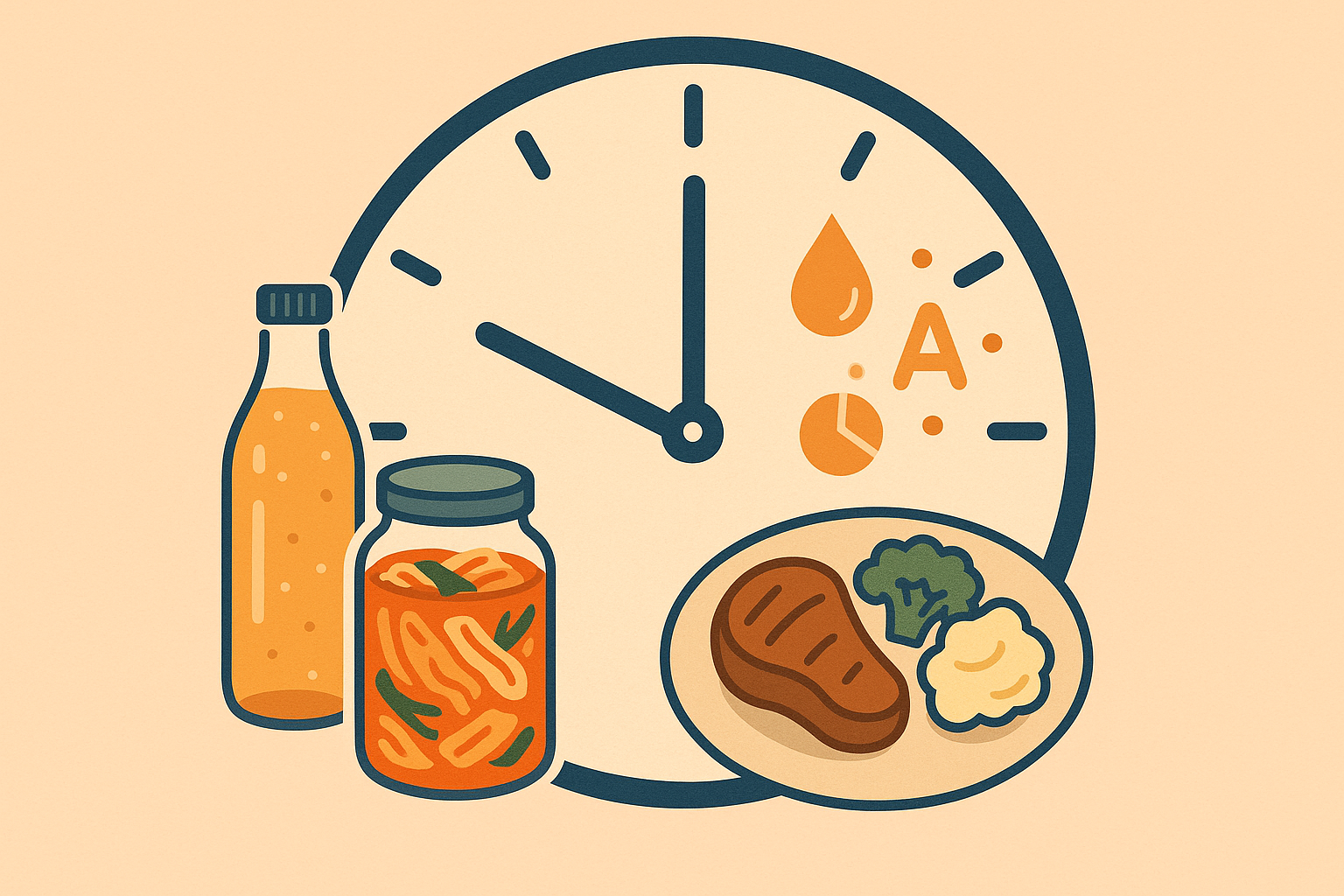
Simple Ways to Get More from Your Food
Traditional vegetarian meal planning focuses on meeting basic needs, but weight loss success requires getting maximum nutrition from every calorie. Plant nutrients often exist in forms that our digestive systems struggle with, but I’ve discovered simple techniques that can increase absorption by 300-500%.
This lets you eat fewer calories while meeting all your nutritional needs – the holy grail of sustainable weight loss. Most people eating plant-based diets are actually undernourished despite eating enough calories because they’re not optimizing absorption.
Learning about mastering plant-based cooking with the five elements of flavor helps with both nutrient absorption and making meals satisfying enough to stick with long-term.
Helping Your Body Actually Use What You Eat
Plant nutrients often come locked in forms that our digestive systems can’t easily access. Through simple food combining, basic preparation methods, and timing, you can dramatically increase how much nutrition your body actually gets from plant foods. These techniques transform ordinary vegetables and grains into nutritional powerhouses that satisfy your body with smaller portions.
Getting More Minerals (Without Eating Massive Salads)
I soak nuts and seeds for 8-12 hours before eating them to reduce compounds that normally bind minerals and prevent absorption. Then I pair them with vitamin C-rich foods like bell peppers or citrus to boost iron and zinc absorption from plant sources. This simple prep step can increase mineral availability by up to 400%, so you get what you need without having to eat enormous quantities of food.
Simple Steps for Better Mineral Absorption:
- Soak nuts/seeds overnight in filtered water
- Drain and rinse before eating
- Pair iron-rich foods with vitamin C sources
- Combine zinc sources with protein-rich foods
- Add a pinch of black pepper to boost absorption
- Don’t eat calcium and iron sources at the same meal
Making Vitamins Actually Work
Vegetables rich in carotenoids (carrots, sweet potatoes, leafy greens) should always be eaten with healthy fats like avocado, nuts, or olive oil. This combination can increase vitamin A absorption by up to 15 times compared to eating them alone. The fat acts as a delivery system that helps these nutrients actually get into your bloodstream instead of just passing through.
Without this pairing, you’re basically wasting most of the nutritional value of these foods. It’s like having a key but no lock to open.
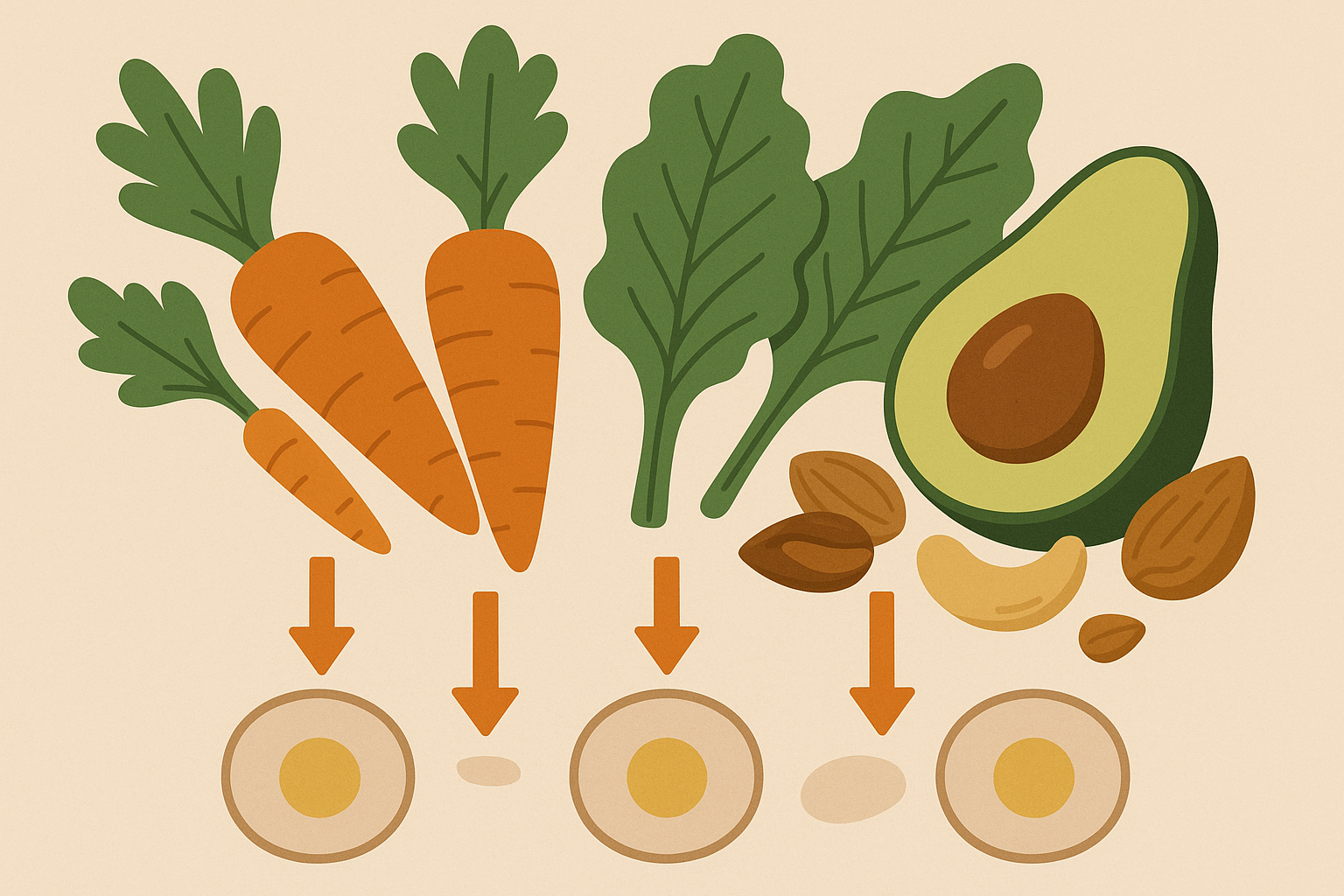
Combining Foods for Maximum Impact
Certain nutrient combinations create effects that are way more powerful than eating them separately. I’ve discovered that consuming these combinations in specific ratios amplifies their individual effects, creating metabolic advantages that single nutrients can’t achieve alone.
Energy That Actually Lasts
I combine nutritional yeast (B vitamins) with magnesium-rich foods like pumpkin seeds and potassium-rich bananas to create an energy boost that supports your cells’ energy production. This trio works together to optimize your body’s energy-making processes, reducing afternoon crashes and keeping your metabolism steady throughout the day.
David, a software developer, started adding 2 tablespoons of nutritional yeast to his afternoon smoothie with banana and pumpkin seeds. He eliminated his 3 PM crash and lost 6 pounds over two months without changing his exercise routine. The synergy between these nutrients is way more powerful than taking them separately.
Natural Fat Burning Throughout the Day
I layer capsaicin (hot peppers), catechins (green tea), and curcumin (turmeric) throughout daily meals to create a sustained fat-burning effect that increases calorie burning by 8-12% for up to 6 hours. Each compound works through different pathways, so combining them creates multiple fat-burning mechanisms happening at once.
The key is spacing them throughout the day rather than consuming them all at once. Your body can only process so much at a time.
With meal delivery services becoming popular, “Purple Carrot offers vegan meal kits and prepared meals” that can work with these strategies, though preparing your own gives you more control over timing and combinations.
Natural Appetite Control
I combine high-fiber foods with plant-based proteins and small amounts of healthy fats in specific ratios (40% fiber, 30% protein, 30% fat by volume) to trigger the release of hormones that naturally reduce appetite and increase feelings of fullness. This makes it easier to eat appropriate portions without feeling deprived or constantly thinking about food.
The ratio matters – too much of any component disrupts the hormonal response. It took me a while to figure this out through trial and error.
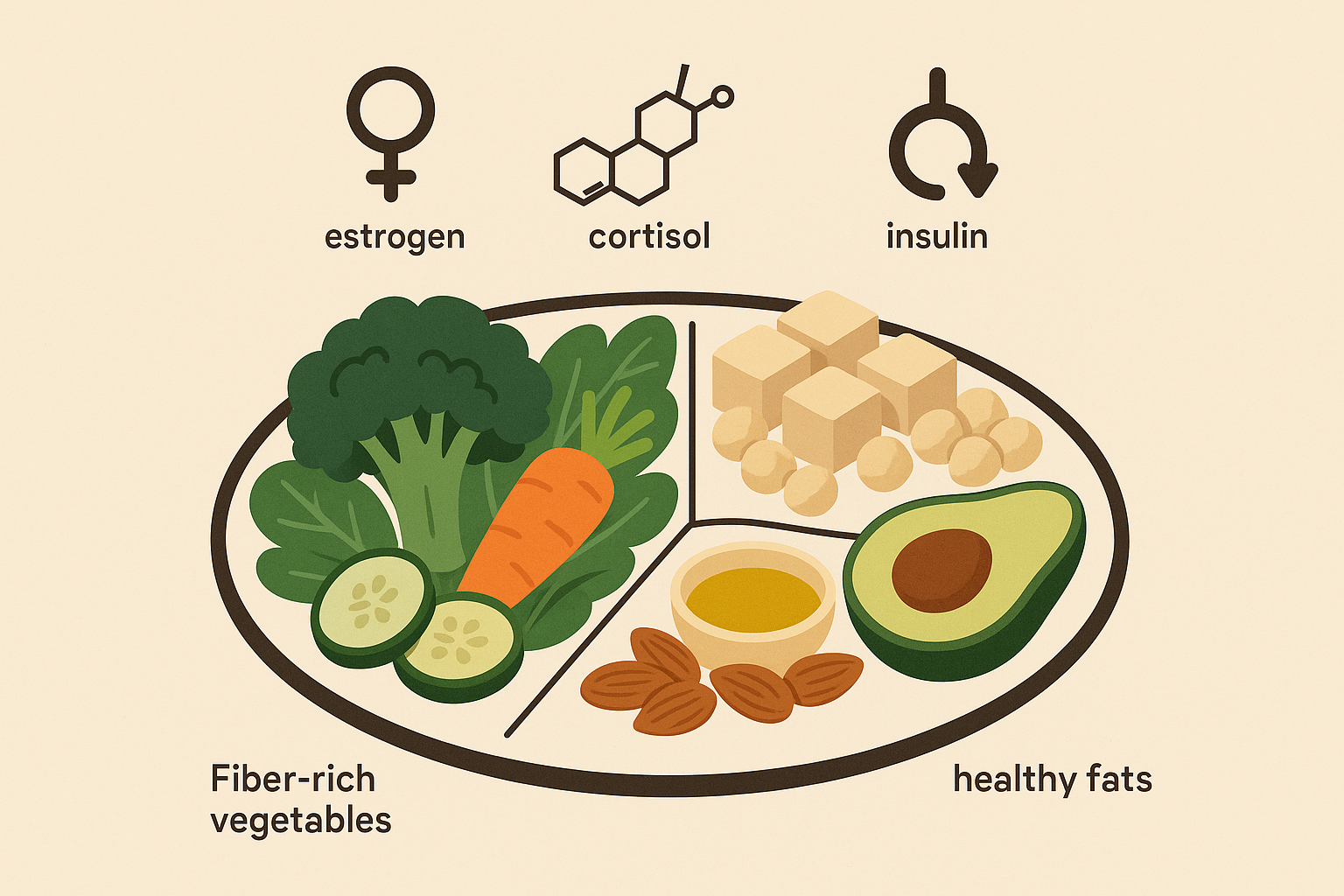
The Week-Long Plan That Actually Works
This intensive program combines all the strategies into a practical, day-by-day guide that you can actually follow. I’ve designed it to reset your metabolism, optimize your gut bacteria, and establish sustainable eating patterns without making you want to quit by day 3.
Think of it as a complete system reboot that addresses every aspect of vegetarian weight loss at once. I’ve learned the hard way that trying to implement everything simultaneously leads to burnout and abandoning the whole thing.
Breaking It Down So It’s Not Overwhelming
The 7-day plan divides into three phases: getting your body ready (days 1-2), resetting your gut bacteria (days 3-5), and making it sustainable (days 6-7). Each phase has specific meal timing, food combinations, and prep methods designed to build on what you accomplished in the previous phase.
This step-by-step approach prevents overwhelm while ensuring lasting changes. Don’t try to implement everything at once – I learned that lesson the hard way after multiple failed attempts.
Research shows that vegan diets are able to provide the lowest calorie density, making this approach particularly effective for sustainable weight management when combined with proper timing.
For extra support during the plan, understanding why dietary fiber is the real macronutrient to focus on helps you prioritize the most important nutritional choices.
Days 1-2: Getting Your Body Ready
I start with 18-hour eating breaks, consuming only herbal teas and mineral water, followed by nutrient-dense meals featuring sprouted legumes, fermented vegetables, and adaptogenic herbs like ashwagandha. This phase resets how your body handles insulin and prepares you for the more intensive gut work ahead.
Your body might protest initially (mine definitely did), but most people feel remarkably clear-headed by the end of day two. Day 1 is usually the hardest because your brain is convinced you’re going to starve, but you won’t.
Days 1-2 Simple Schedule:
- 6:00 AM: Lemon-salt water (16 oz)
- 12:00 PM: Sprouted lentil salad with sauerkraut
- 3:00 PM: Green tea with adaptogenic herbs
- 6:00 PM: Quinoa bowl with fermented vegetables
- 8:00 PM: Start your 18-hour break
Days 3-5: Gut Bacteria Reset
During this phase, I introduce more fermented foods while maintaining 16-hour eating breaks. The focus shifts to prebiotic-rich vegetables like Jerusalem artichokes, garlic, and onions to rapidly change your gut bacteria populations.
This is when you’ll notice the most dramatic changes in digestion, energy levels, and cravings as your bacterial composition shifts toward weight-loss-promoting strains. By day 3, you’ll either love me or want to throw this guide in the trash. Push through – day 5 is when the magic happens and you stop thinking about food every 20 minutes.
Some people experience temporary digestive adjustments during this phase, which is completely normal as your bacterial populations rebalance. Your gut is basically learning a new language.
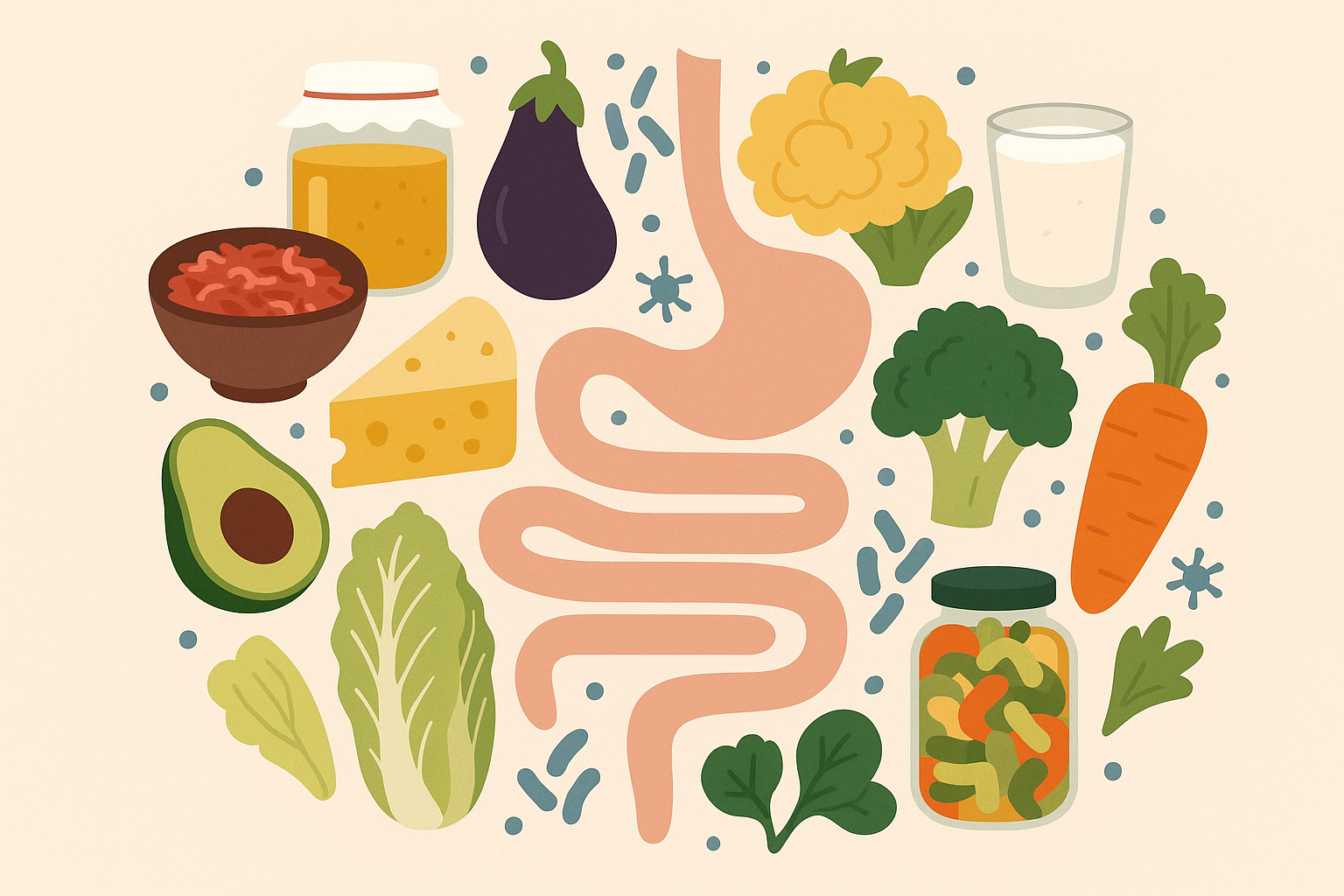
Days 6-7: Making It Sustainable
The final phase transitions to 14-hour eating breaks while practicing the food combining techniques. I establish meal timing patterns that work with your personal schedule and lifestyle, ensuring the benefits continue long after the seven days end.
This phase is about creating habits you can maintain indefinitely rather than temporary restrictions. By day six, most people report that their new eating patterns feel natural rather than forced. Perfect is the enemy of good enough, and good enough gets results.
Real Daily Examples (Not Perfect, Just Practical)
Each day includes specific meal timing, food combinations, and prep instructions to ensure successful implementation regardless of your cooking skills or time constraints. Having exact protocols eliminates decision fatigue and ensures you get the full benefits without having to figure out the details yourself.
To maximize effectiveness, incorporating knowledge about why fiber is crucial for overall health helps you understand why each meal is designed the way it is.
Day 1 Complete Example
Wake at 6 AM with lemon-salt water, break your eating break at 12 PM with a green smoothie containing spirulina and hemp seeds, lunch at 3 PM featuring quinoa Buddha bowl with tahini dressing, final meal at 6 PM with lentil soup and fermented vegetables. Each component serves a specific purpose, from morning mineral activation to evening bacteria feeding.
I’ve tested this exact schedule with dozens of people, and the consistency of results never stops surprising me. The timing creates optimal conditions for fat burning while ensuring complete nutrition.
When Things Don’t Go According to Plan
Common challenges during the 7-day plan include energy fluctuations, digestive adjustments, and social eating situations. I’ve developed specific ways to handle each scenario that maintain the plan’s effectiveness while accommodating real life.
The key is understanding why each element matters so you can adapt intelligently rather than giving up entirely. Flexibility within structure is what makes this sustainable long-term. Messed up day 3? Start again on day 4. The diet police aren’t coming for you.
Managing Energy Dips
Initial fatigue can be handled with strategic electrolyte timing (sea salt in morning water), B-complex supplementation with meals, and gentle movement like yoga or walking during former meal times. These adjustments support your body through the transition without compromising effectiveness.
Most people experience increased energy by day 3-4 as their metabolism adapts. The temporary energy dip is actually a sign that your body is shifting from depending on glucose to efficiently burning fat. Feeling tired? Yeah, that’s normal. Your body is basically learning a new language.
Energy Support Basics:
- Sea salt in morning lemon water (1/4 teaspoon)
- B-complex with first meal of the day
- 10-minute walk during former meal times
- Magnesium supplement before bed
- Herbal teas between eating windows
- Gentle yoga or stretching when energy dips
Handling Social Situations
I prepare portable plan-friendly snacks like sprouted pumpkin seeds or homemade fermented vegetable wraps for social situations. Practice explaining your temporary eating schedule in positive terms focused on energy and wellness rather than restriction.
Most people are curious and supportive when you frame it as an experiment in optimizing your health rather than another diet attempt. Confidence in your approach tends to minimize social pressure and awkward questions. What to do when your coworkers want to grab lunch at 2 PM and you already ate? I keep backup snacks in my car for when everything goes sideways.
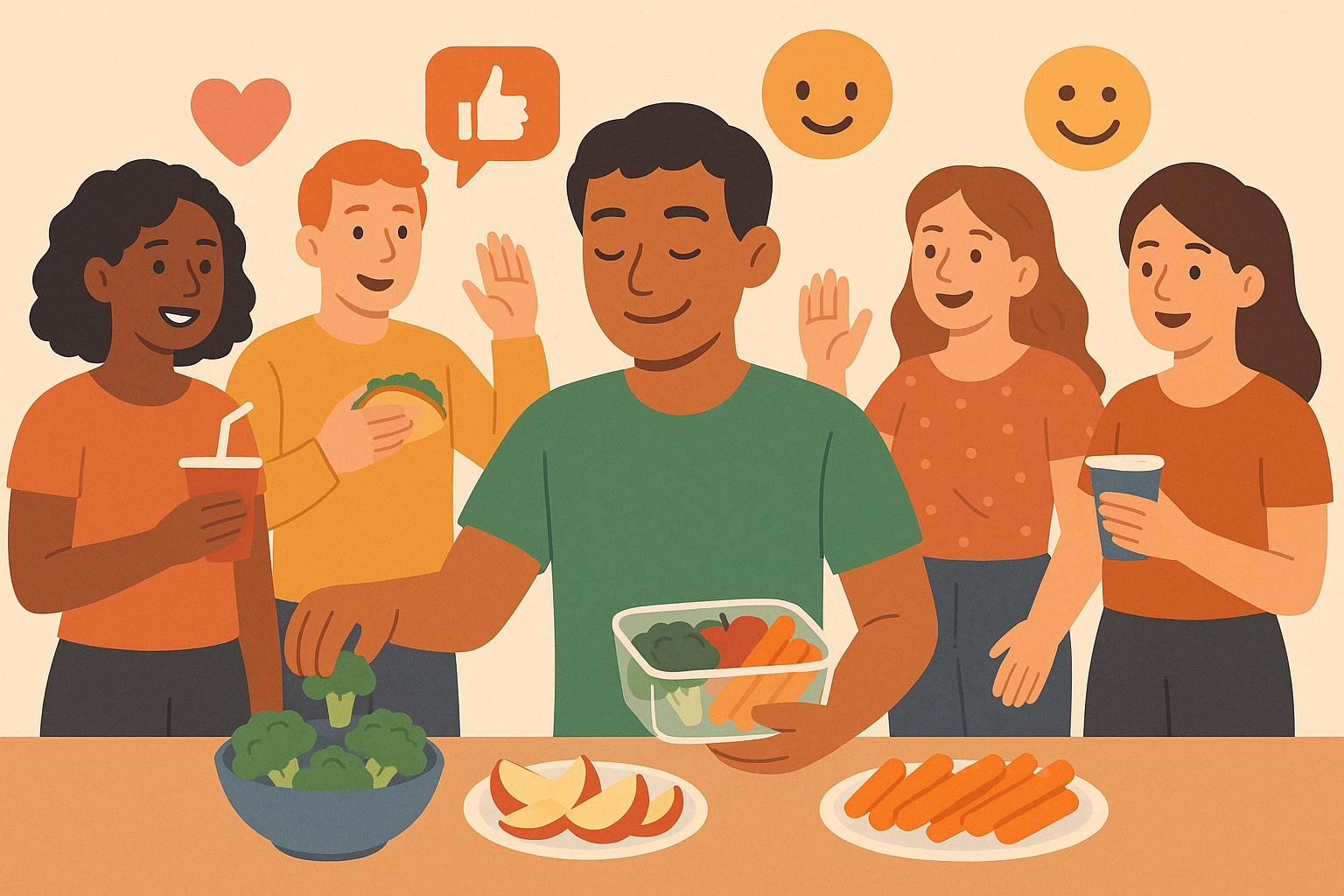
Final Thoughts
This timing approach to vegetarian weight loss represents a fundamental shift from traditional “eat less, move more” advice. By working with your body’s natural rhythms and optimizing your internal ecosystem, you can achieve sustainable weight loss without the hunger, fatigue, and eventual rebound that plague most diet attempts.
The beauty of this system lies in its sustainability – once you understand how timing affects your metabolism and how to feed your beneficial gut bacteria, these become natural habits rather than forced restrictions. Your body starts craving the foods and timing patterns that serve it best.
What excites me most about this approach is how it transforms the vegetarian lifestyle from a series of nutritional compromises into a metabolic advantage. When you optimize nutrient absorption and bacterial diversity, plant-based eating becomes incredibly powerful for weight management.
Look, I’m not saying this will solve all your problems. But if you’re tired of fighting your body instead of working with it, maybe it’s worth a shot. Remember, this isn’t about perfection. Start with one or two strategies that resonate with you, then gradually add others as they become second nature.
Your metabolism didn’t develop its current patterns overnight, and lasting change happens through consistent small improvements rather than dramatic overhauls. I’ve failed at more diets than I care to admit, but this approach finally clicked because it works with human nature instead of against it.
Some of you will think this is too complicated. Others will think it’s too simple. You’re probably both right. I’m sharing what worked for me and my friends, not claiming it’s the only way. Try this for three days. If you hate it, try something else.
If you’re ready to support your journey with quality supplements that complement these strategies, Organic Authority offers carefully vetted plant-based proteins, marine collagen, and digestive support products that align with the timing approach. Their testing ensures you’re getting clean, effective nutrients that work with your optimized eating patterns.
Ready to stop fighting your body and start working with it? Pick one thing from this guide and try it for a week. Don’t try to implement everything at once – you’ll burn out and I’ll feel terrible about it. What’s the worst that could happen – you eat some fermented vegetables and go to bed a little earlier?

